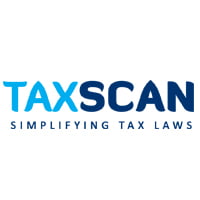Bogus Purchases of ₹2.5 Crore: ITAT applies 4% GP Rate citing Taxpayer’s Declared Profit [Read Order]
The Tribunal held that only the profit element embedded in bogus purchases should be brought to tax and upheld the CIT(A)'s application of a 4% gross profit rate, following jurisdictional High Court rulings
![Bogus Purchases of ₹2.5 Crore: ITAT applies 4% GP Rate citing Taxpayer’s Declared Profit [Read Order] Bogus Purchases of ₹2.5 Crore: ITAT applies 4% GP Rate citing Taxpayer’s Declared Profit [Read Order]](https://www.taxscan.in/wp-content/uploads/2025/04/ITAT-Disputed-purchases-Labour-Expenses-Alleqed-Boqus-Purchases-taxscan.jpg)
The Mumbai Bench of the Income Tax Appellate Tribunal (ITAT) upheld the order of the Commissioner of Income Tax (Appeals) [CIT(A)], which restricted the addition on account of bogus purchases to 4% of the purchase value.
Deepak Jagshibhai Visaria (assessee) who was alleged to have made bogus purchases which amounted to Rs. 2,50,59,386. The Assessing Officer (AO) based on information received from the Maharashtra Sales Tax Department, treated purchases of ₹2,50,59,386 as bogus and made an addition of ₹31,32,423 by applying a gross profit rate of 12.5%.
Read More: Major Shuffle in Income Tax Department: CBDT Transfers Senior Officials [Read Order]
Aggrieved by the addition made by the AO, the assessee filed an appeal before the CIT(A). The CIT(A) accepted the submissions of the assessee and restricted the addition of the Gross profit @4% on the alleged bogus purchases.
The CIT(A) held that when sales were accepted and recorded in the books, only the profit element in the bogus purchases should be taxed. Therefore, the CIT(A) restricted GP rate of 4% on the impugned purchases.
Law Simplified with Tables, Charts & Illustrations – Easy to Understand - Click here
Aggrieved by the CIT(A)’s relief, the Revenue filed an appeal before the ITAT. The counsel for the assessee relied on the decision of the coordinate bench of ITAT Mumbai in the case of Hasmukh Jagshi Visaria V. ITO which held that the assessee had lower gross profit and therefore the profit was reduced to 2% on bogus purchases.
The two-member bench comprising Amarjit Singh (Accountant Member) and Anikesh Banerjee (Judicial Member) observed that the case was covered by binding judicial precedents, including the decision of Bombay High Court in PCIT v. S.V. Jiwani where it was held that in such cases, only the embedded profit is taxable and not the entire bogus purchase amount.
Read More: No Income Tax in U.S.? President Trump Suggests Tariffs Could Replace It
The tribunal observed that the CIT(A) respectfully followed the judicial precedents which treated the gross profit as only the income of the assessee. The tribunal upheld the order of the CIT(A) reducing the gross profit at 4%.
The appeal of the Revenue was dismissed.
To Read the full text of the Order CLICK HERE
Support our journalism by subscribing to Taxscan premium. Follow us on Telegram for quick updates
Income-tax Officer vs Mr. Deepak JagshibhaiVisaria , 2025 TAXSCAN (ITAT) 777 , ITA No.4077/Mum/2024 , 04 February 2025 , Prateek Jain , Asif Karmali (SR DR)

